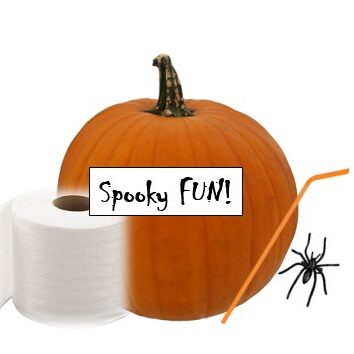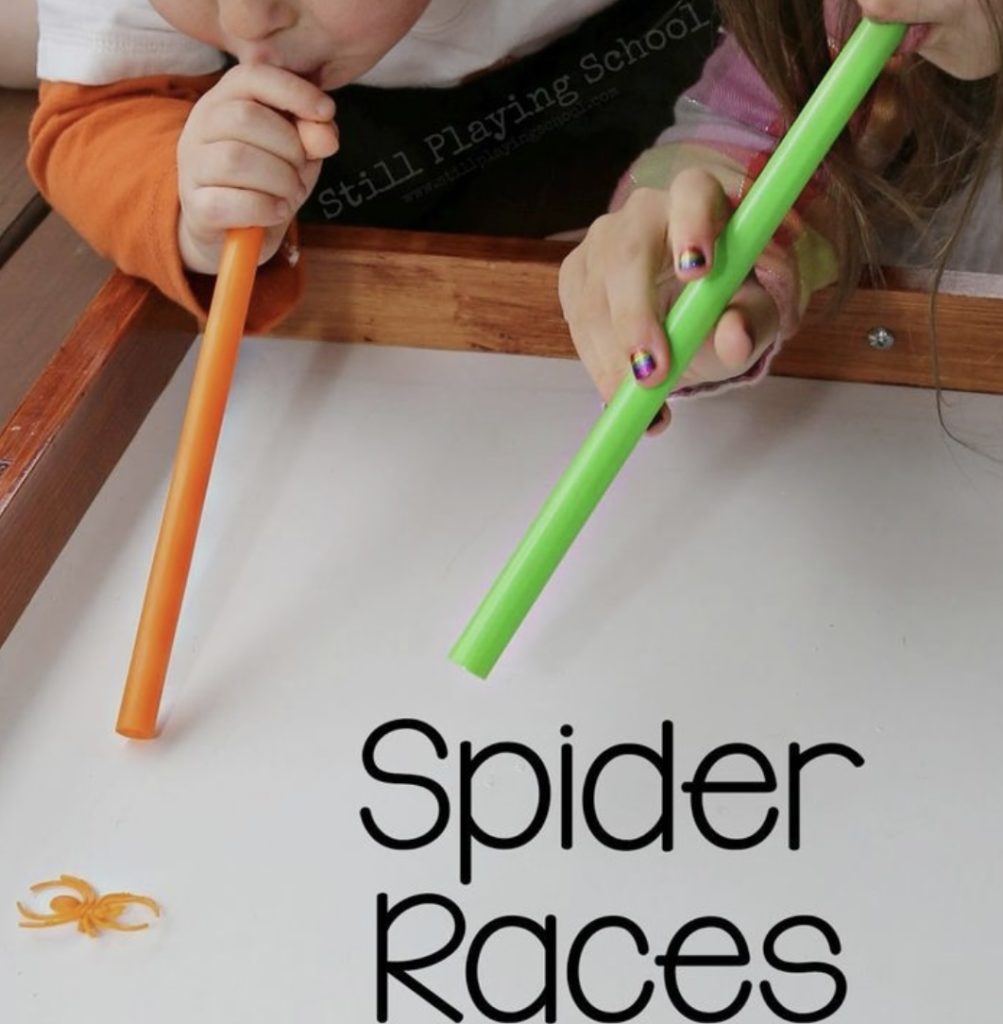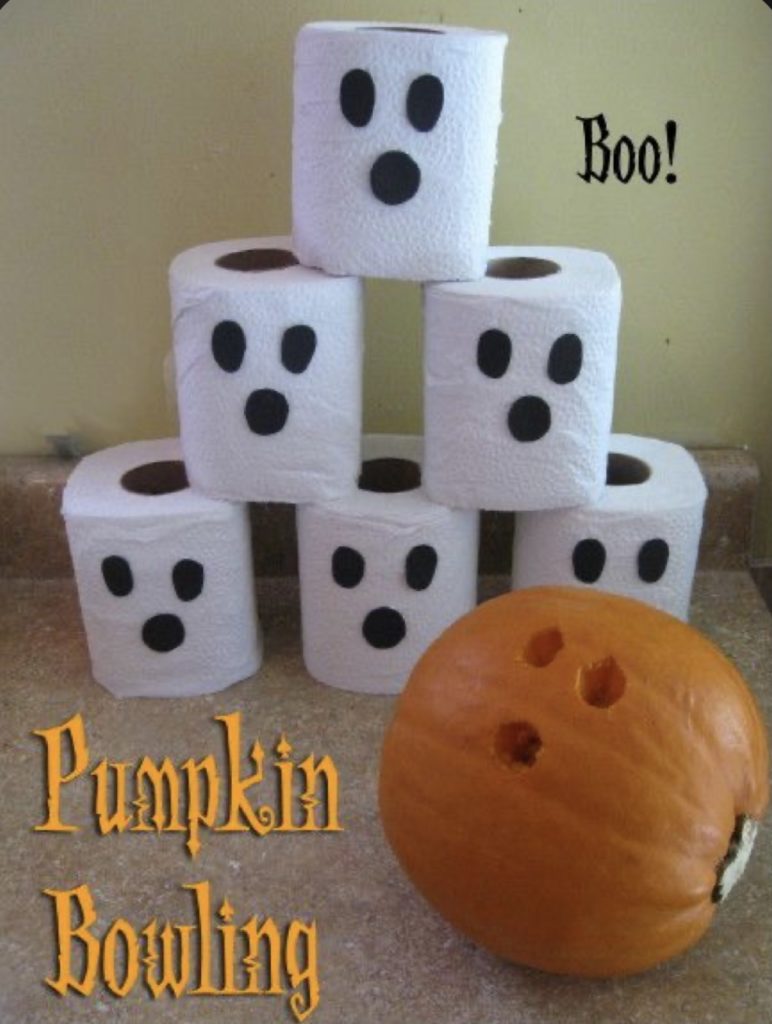Spooky Games – Play, Learn & Grow!
Practice teamwork and problem solving by taking simple Halloween objects and turning them into fun games!
Published on October 30, 2020

Here are two spooky games to help children work on coordination & cooperation as you cheer them on to success!

Materials:
- Plastic fake spiders
- Straws
Instructions:
Time needed: 20 minutes
Use the fake spiders from last week’s activity to create a fun spider race!
- One-On-One
How it works: Each child uses their straw to blow the spider across the finish line. Create your own rules for the game such as, “You can start once I count to three!” and “The first one over the line is this round’s winner.” It is important for child growth and development to learn good sportsmanship skills. For example, prompt the winner to congratulate others on doing their best. Trying is a vital part of learning and to develop a growth mindset.
- Working Together – Teamwork
How it works: Place one spider between the players and encourage them to work together to get the spider across the finish line. Provide narration about what is happening and cheer them on as they complete the task!
- Alternative if you don’t have spiders
How it works: Use a straw and Cheerios or other small object to achieve the same goal and work to develop good sportsmanship skills, as well as practicing teamwork.

Materials:
- 6 Rolls of toilet paper
- Black construction Paper
- Scissors
- Tape
- Ball
Instructions:
- Cut three circles out of the black construction paper for each roll of toilet paper
- Tape each circle to the rolls of toilet paper to create two eyes and a mouth
- Set up the rolls of toilet paper in the shape of a pyramid (3 on the bottom row, 2 on the middle row, and 1 on top)
- Using a ball or even a small pumpkin, have the child stand at a certain distance away from the pyramid and roll the object to knock down as many of the toilet paper rolls as possible
Practice “Maximize Love, Manage Stress” (The Basics) by encouraging the child to “try again” if they miss or narrate what they are doing (example: “I see you stood closer this time, great job problem solving!”). Celebrate with them when they have accomplished their goal.
